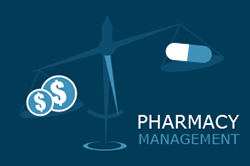Today, few people have heard of Christopher Ter-Serobyan, but somehow everybody is perfectly familiar with the green colour of the dollar. So ... the 70s of the 19th century were marked by rapid development of photography. This in turn allowed the counterfeiters and particularly adventurous individuals in the United States to easily reproduce black and white banknotes, in which the green color was applied only at the edges and in a minimum amount. In America, a serious question arose about how to protect their own population from such "dealers". Green paint, incidentally, has already been purchased, so the experts decided to use it as the base color of the national currency. Banknote today is far from being green, rather, a green with a touch of pink, orange and so on.
Meanwhile, the creator of this color, which can not be forged,was a young talented chemist Christopher Ter-Serobyan, who in 1854 was invited to America from Istanbul to make it impossible to counterfeit US dollar. For his work, Ter-Serobian received $ 6,000, which allowed him to continue his training. He became a pharmacist and returned to Istanbul, becoming the main creator of the colors of the American dollar that can not be faked. Today, few people know that the author of this color is an Armenian scientist.
In general, it should be noted that many elements of the world's most powerful currency - the dollar, still remain a mystery for many researchers.
Thus, the very history of the origin of the word "dollar" is much older than the currency itself. Traditionally, the roots of the name of the bill goes to the Czech Republic, where the local currency of a town was called "thaler". Later, the Americans "borrowed" the name from the English: so thalers became "Dalers". But there is another version according to which Americans borrowed the name of the national currency from the Scandinavians. For about the same time, Denmark and Sweden used a coin, called "Daler". However, neither Thalers nor Dalers were ever "privatized", they were freely traded as a currency, but had not received the status of the national currency.
In 1784 the Americans made it their national currency. As for the dollar sign, the first modern dollar sign was applied by a wealthy merchant and planter, an Irishman by birth, Oliver Pollock. He was the supplier of the army of American patriots during the war against the British oppressors, and entered the amount of revenue in the books with the icon that combined P and S. Pollock presented his bill to the American Congressman Robert Morris, who became the first high-ranking Yankee to use a dollar as an official sign in documents.
The reason for the mark was the Spanish peso (Spanish dollar piastres, or rather the Spanish peso minted in modern Mexico) - P with the addition of S, then the peso has plural. S has been imposed on the P and simplified. Possible look and other versions of the origin of the mark: the $ symbol has derived from the abbreviation of the United States and is a mixture of two letters U and S, the lower part of the U-disappeared, and two vertical "sticks" were combined and applied to S. Authors of mystical writings indicate that the sign is a Masonic symbol of the Temple of Solomon, or rather, the name of "Solomon" (S) and his two pillars. It is known that the founding fathers of the United States have been active members of Masonic lodges. So the symbols shown on the bills are not as simple as it might seem at first glance.There is still no official explanation of why such a strange symbolism is used on the most common US bill.
Note that the appearance of dollar banknote has been constantly changing. It received its modern form in 1928. The design was executed by the artist, an immigrant from Russia, Sergei Makronovskim.
Business management automation softwares
- Dental clinic
- MER Pharmacy
- Restaurant MS
- Time Tracker
- Mobile commerce system
- Paying customers with JivoChat























